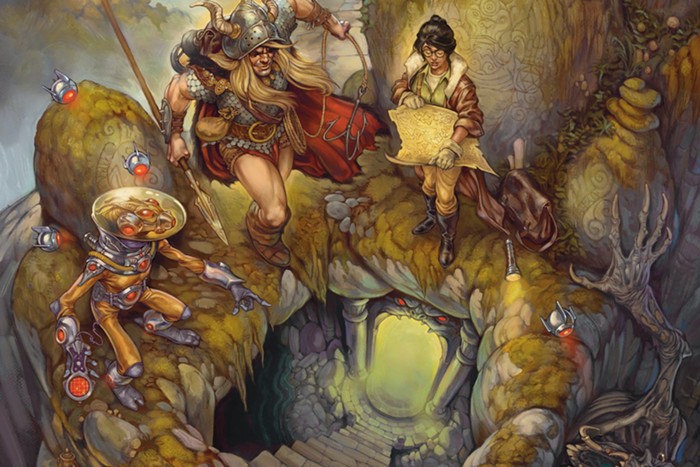Over on the I Love Music discussion board, there are plenty of threads decrying this calendar year as the worst ever for new music, and more than a few record executives eyeing sales would have to agree with these disgruntled music critics and 15-year-olds. Just ask Jermaine Dupri, made to answer for a Janet Jackson record that still hasn't gone gold, or Capitol Records head Andy Slater, under fire from his own employees. When the heads finally stop rolling, 2006 will be the year that the chill of online file sharing resolutely settled across the music landscape, to the point where the Platinum Club is exclusive indeed and anemic first-week sales of under 100,000 (like Johnny Cash's posthumous release) can top the Billboard charts.
So So Def and Tower Records aren't the only ones feeling the bite though, as the criticism side of things has taken a direct hit. Spin magazine, once the second-largest music magazine in the U.S., threw its entire staff into a blender (perhaps to be more like the fleshpot-peddling upstart Blender). The Village Voice, a bastion of critical thought in both politics and art from the '60s through the '90s, was bought out by the New Times alt-weekly monopoly and promptly gutted; it not only dismissed longtime music editor Chuck Eddy, but also fired the most distinguished rock critic in America, Robert Christgau, AKA "The Dean." And yet, despite the glum, ever-shrinking pool of music journalism, the Da Capo Best of Music Writing 2006 surprisingly proffers a bit of hope in this floundering profession.
After the debacle of the 2005 edition—guest-edited by JT LeRoy, of all the hapless hacks out there (identity scandal or no), and barely breaking 200 pages—the 2006 edition of the series can't help but phoenix out of that nadir. A good hundred pages thicker, astutely selected by its second female guest editor, author Mary Gaitskill, the book finally reflects the current state of not just music journalism but music listening. This is the first year to feature not a single contribution from Rolling Stone or Spin; the strongest showing is from music websites and the blogosphere. Over a quarter of the 30-plus pieces are on paper for the first time.
And while past editions were more like embalming ceremonies of old musicians, the subjects here are refreshingly 21st century: Bloc Party, R. Kelly, M.I.A., Tego Calderón, High on Fire, Silver Jews. At the other end of the spectrum, three articles report on opera and classical (also a first), with Alex Ross's examination of John Adams and Peter Sellars's Doctor Atomic (about Robert Oppenheimer and the atomic bomb) pulling off that rare feat of making an opera sound cool. John Biguenet's piece on the DeZurik Sisters does a similar thing for yodeling.
The hiphop writing is as sharp, tactile, and crystalline as a broken bottle of 8-Ball. Dangerous too, as Elizabeth Méndez Berry's investigation of spousal abuse in the world of hiphop led to physical intimidation and witnesses afraid to go on record against some of the industry's biggest names. It reaches a pinnacle when Bushwick Bill threatens writer Peter Relic during his piece on the Geto Boys, easily one of the most surreal, violent, and ludicrous artist encounters ever documented.
A tour diary by Susan Alcorn, a Houston-based pedal steel player adept at both country chart toppers and microtonal improvisation, provides a devastating meditation on professional musicianship, crazy friends, the peculiarities of memory, American politics, and death, all rendered out on the Texas highways. In Greil Marcus's piece on Bob Dylan (no surprise there), an old folk song gets usurped by a bunch of high-school misfits for a caustic talent-show performance of "Masters of War," emphasizing the threat of death at the song's core. The final entry is Moustafa Bayoumi's chilling investigation into American pop music being used to torture Iraqi prisoners of war. Reporting on how everyone from Metallica to Britney Spears was piped into prisoner cells at excruciatingly high volumes as a form of torture, it's diametrically the opposite of the Marcus piece. Music emboldens the oppressed in the former and gets hijacked as a tool of the oppressor in the latter. These essays encapsulate a chilly, malefic year for music indeed. 


















